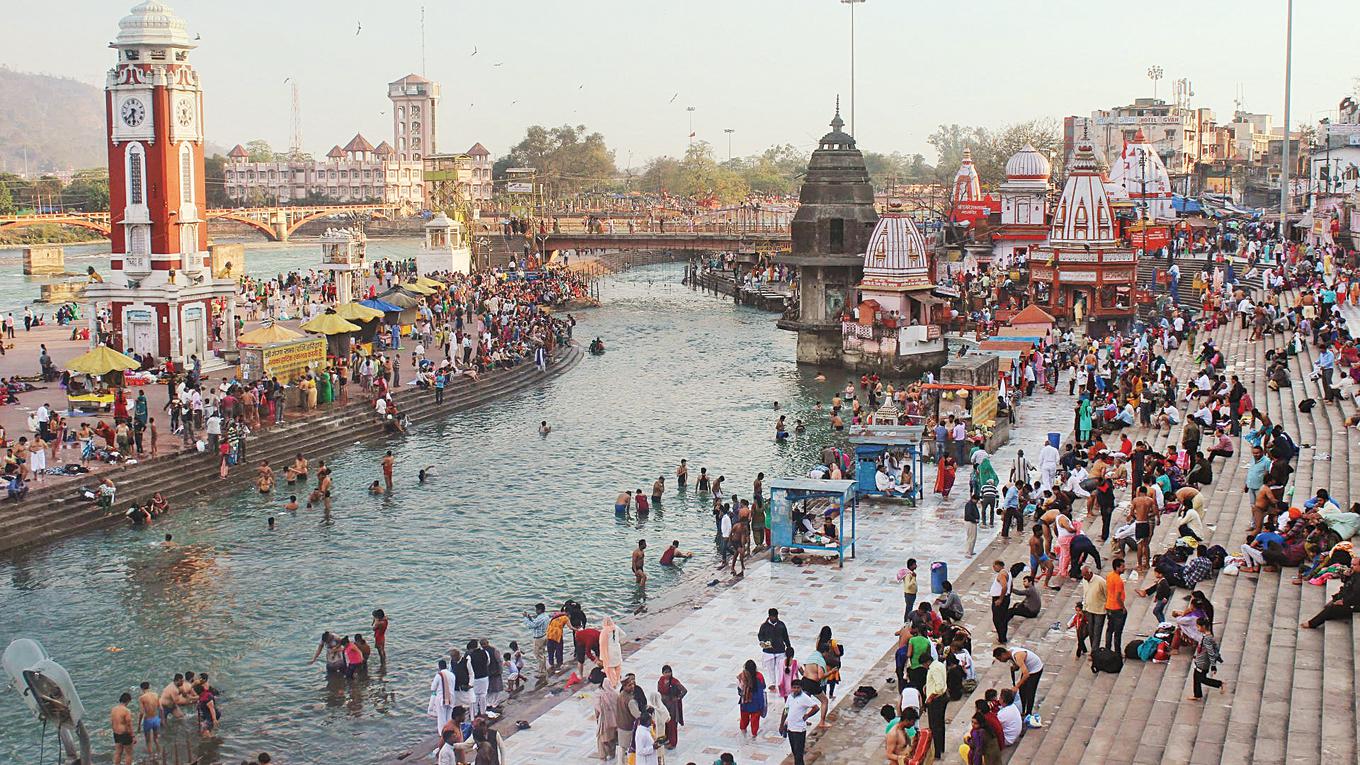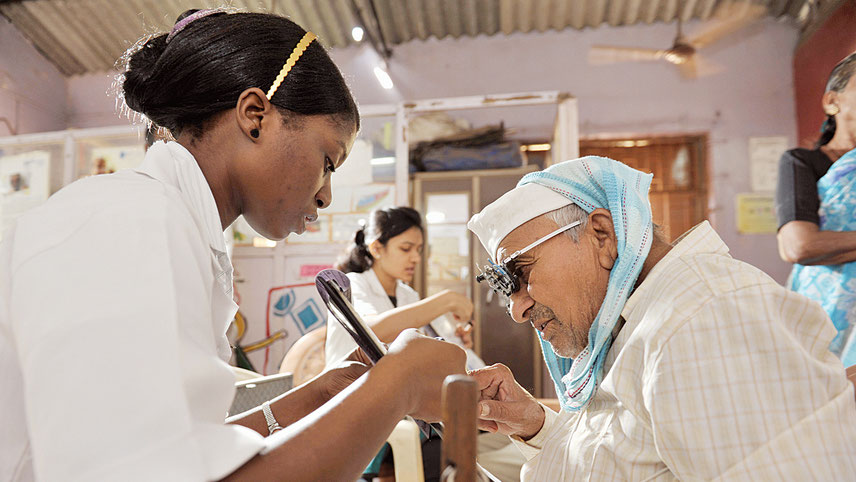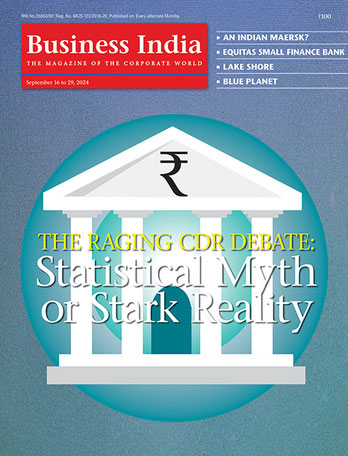-

Ensuring healthy lives and promoting well-being for all ages

Health defines human existence. It is an important ingredient for happiness and it underpins the productivity of human populations. The health of a country’s population contributes to the economic growth and progress of that country. While significant achievements have been made under the Millennium Development Goals, millions of people continue to remain outside the network. More than six million children die before their fifth birthday every year. The third Sustainable Development Goal (SDG) on ‘Good Health and Well-Being’ focuses on ensuring healthy lives and promoting well-being for all ages. SDGs make a bold commitment to end the epidemics of aids, tuberculosis, malaria and other communicable diseases by 2030. India has progressed substantially in the last two decades with respect to health, water and sanitation. According to government statistics, The Infant Mortality Rate is 37 per 1,000 live births in India with a target of 25 per 1,000 live births by 2017 as per the XIIth Five Year Plan. But maternal mortality continues to remain high, with India accounting for 15 per cent of total global maternal deaths. Malaria and Tuberculosis As per the global TB report 2016, an estimated 480,000 deaths occurred due to TB in India in 2015 or more than two deaths every three minutes. India accounts for 27 per cent of the global TB burden which is the highest. Malaria cases were brought down from 2.3 million in 2000 to 1.6 million in 2012. As per the National Family Health Survey-4 only 36.7 per cent of rural households in India have access to improved sanitation facilities and 24 per cent use clean fuel for cooking. Only 62 per cent of children (age 12- 23 months) are fully immunised.
GOVERNMENT OF INDIA SCHEMES
National Rural Health Mission (NRHM)
Launched in 2005, and now subsumed under the National Health Mission, NRHM seeks to address the health needs of people living in India’s rural areas. From 2005 to 2014, central assistance of more than Rs.101,288 crore has been released to states and Union Territories to increase public spending on health. As of 2014, there were 8,743 working Primary Health Centres (PHCS) compared to just 1,263 in 2005. The number of First Referral Units (FRUS) increased from 940 in 2005 to 2,653 in 2014. Prior to NRHM, a call centre-based ambulance network was hardly available. Now most states have the facility to dial 108 or 102 for emergency ambulance services.
National Urban Health Mission (NUHM)
Launched in 2013, NUHM focuses on meeting the healthcare needs of the urban population, especially urban poor, through provision of essential primary care health services. A reduction in Infant Mortality Rate (IMR) by 40 per cent and Maternal Mortality Rate (MMR) by 50 per cent is an important target under the mission. The total outlay for the NRHM and NUHM between 2014 and 2017 was more than Rs.58,750 crore.
India Newborn Action Plan (INAP)
Launched in 2014 with the aim of ending preventable newborn deaths and stillbirths by 2030, this plan will be implemented within the framework of the National Health Mission. As per the INAP report published in 2014 by the ministry of health and family welfare, the Neonatal Mortality Rates (NMR) in rural and urban areas are 33 and 16 respectively (per 1,000 live births). The discrepancy is more marked in the states of Andhra Pradesh, Assam, Jharkhand and Kerala where the rural NMR is 2.5 times or more than that of urban areas.
Integrated Child Development Services (ICDS)
Launched in 1975, ICDS was implemented by the ministry of women and child development. ICDS offers a package of six services – supplementary nutrition, pre-school non-formal education, nutrition and health education, immunisation, health check-up and referral services. As on March 2015, 7,072 projects and 13,46,186 Anganwadi Centres (AWCS) were operational across 36 states and Union Territories covering 10.2 crore beneficiaries under supplementary nutrition and 3.65 crore
children under the pre-school component.
National Aids Control Programme (NACP)
Launched in 1992, NACP, a division of the ministry of health and family welfare, provides leadership to this programme. The budget outlay under NACP-IV (2012-17) is H14,295 crore. Some of the services provided under this plan are targeted preventions, blood transfusion, HIV counselling, prevention of parent to child transmission, work place interventions, laboratory testing, Anti-Retroviral Treatment (ART), etc. Adult HIV prevalence has continued its steady decline from an estimated peak of 0.38 per cent in 2001-03 to 0.26 per cent in 2015.
Swachh Bharat Abhiyan
Also known as the Clean India Mission, the flagship programme of the Narendra Modi Government. The programme’s campaign was launched on 2 October 2014 by the Prime Minister. As per the targets, around 12 crore toilets (in both urban and rural areas) are being planned by October 2019 at an estimated expenditure of Rs1.96 lakh crore. The funding and implementation of this mission will be done by various players, including the central and state governments, private players, non-profits and other sources. As of August 2016, 115 cities have been declared Open Defecation Free (ODF).
National Mission for Clean Ganga (NMGC)
Under the ministry of water resources, river development and Ganga rejuvenation, nmgc envisages measures for prevention, control and abatement of environmental pollution in the Ganges. NMGC is the implementation wing for the flagship ‘Namami Gange Programme’ and Rs20,000 crore has been approved till 2020 to implement this scheme. The main pillars of the Namami Gange Programme are sewerage treatment infrastructure, river-front development, river-surface cleaning, afforestation and industrial effluent monitoring.
National Water Quality Sub Mission
The Government of India launched this scheme (also known as ‘Har Ghar Jal’) in March 2017 to provide safe drinking water to 28,000 arsenic and fluoride affected rural habitations by March 2021. An outlay of H25,000 crore has been made. States like West Bengal are badly affected by the problem of arsenic and states like Rajasthan suffer from presence of fluoride in drinking water. The World Bank estimates that 21 per cent of communicable diseases in India are linked to unsafe water and the lack of hygiene
practices.
Biogas
BioEnergy will showcase its innovative biogas technology in India
Mobility
Ather aims to produce 20,000 units every month, soon
Green Hydrogen
German Development Agency, GIZ is working on a roadmap for a green hydrogen cluster in Kochi
Renewable Energy
AGEL set to play a big role in India’s carbon neutrality target




















